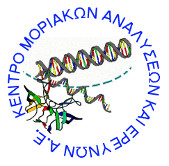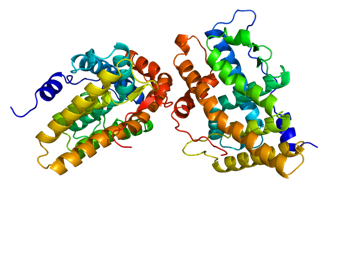PgR
The progesterone receptor (PR, also known as NR3C3 or nuclear receptor subfamily 3, group C, member 3), is a protein found inside cells. It is activated by the steroid hormone progesterone. In humans, PR is encoded by a single PGR gene residing on chromosome 11q22.
The physiological actions of progesterone are mediated by the progesterone receptor (PGR) and many studies on the gene, located at 11q23, and translated protein have investigated their possible roles in tumorigenesis. The progesterone ligand binds to its steroid hormone receptor and dimerizes.This complex works as a transcription factor,controlling the expression of downstream genes involved in mammary cell growth and differentiation.In addition, synthetic progestins, as well as the steroid hormones themselves, have been seen to lead to increased transcription of downstream oncogenic targets, such as c-myc and c-fos.
Loss of heterozygosity at 11q22-qter has been frequently seen in cervical, ovarian, and breast cancers and has been associated with higher-grade tumors and a more aggressive disease course, indicating the existence of a tumor suppressor gene within this region and PGR is a good candidate.Similar correlations have been seen between tumor invasiveness and low levels of hormone or higher levels of receptor.The majority of breast cancers stain positively for both PGR and estrogen receptor. Microarray studies have found PGR-negative tissue to have high levels of transcripts of genes associated with cell proliferation.



